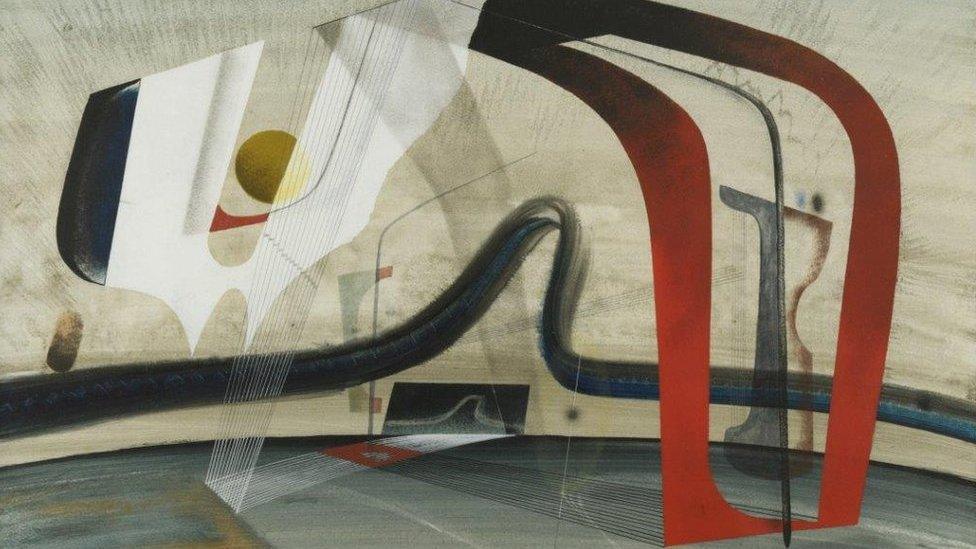Perry Green: Henry Moore bronzes cleaned up for new exhibition
- Published
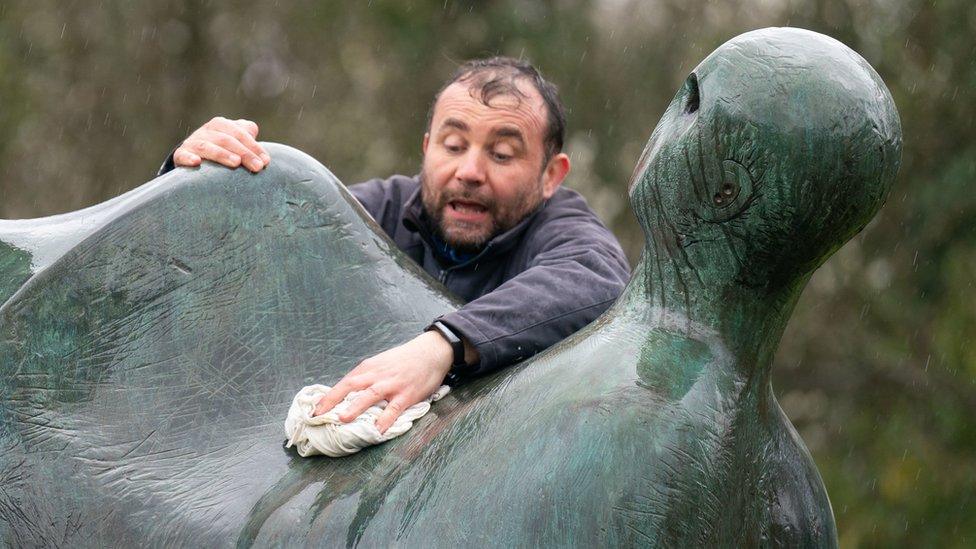
Sculpture technician Dai Roberts cleans and dries the Goslar Warrior at the Henry Moore Studios and Gardens in Hertfordshire
A collection of Henry Moore bronzes are getting a final clean ahead of a new exhibition celebrating his work.
Moore, who spent the end of his life at Perry Green, Much Hadham, in Hertfordshire, was renowned for his semi-abstract monumental sculptures.
More than 20 of his pieces will be exhibited by the Henry Moore Foundation in the gardens of his studios.
The exhibition - Vitality: The Human Landscapes of Henry Moore - will open on 5 April.
Senior curator, Dr Hannah Higham, said the significance of his work was "heightened by their placement here in the landscape in which they were created".
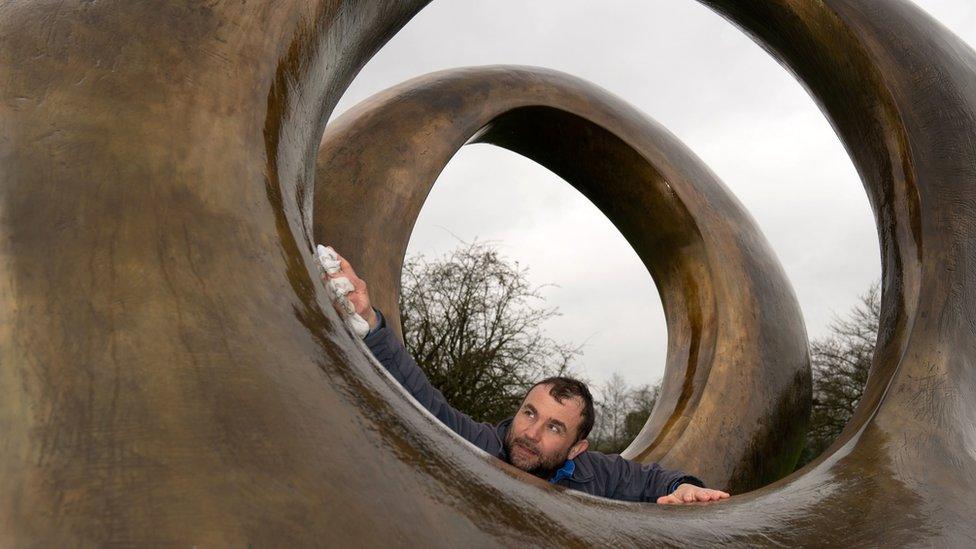
Dai Roberts has been wiping down the bronze sculpture Double Oval ahead of the Much Hadham exhibition
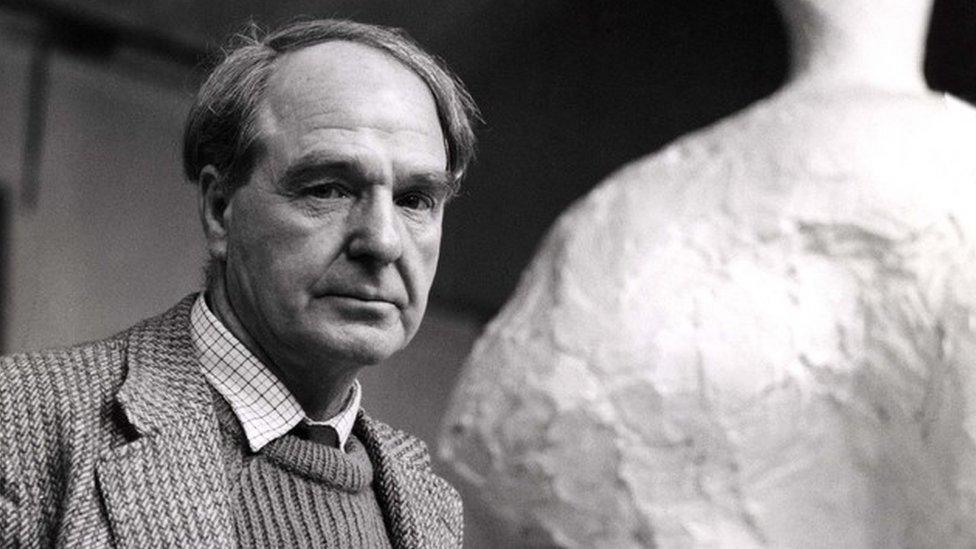
Henry Moore, pictured in 1960, was the first British artist to become globally recognised in his lifetime, according to the foundation
Moore was born in Castleford, West Yorkshire, in 1898, and later moved to the village of Perry Green, where he stayed for the rest of his life.
He is best known for his monumental bronze sculptures but he also made carvings, drawings, prints and designed textiles and tapestries.
Moore often made work on the subjects of the mother and child and the reclining figure, using nature and the human body as "sources of vitality" which he could harness in his work, the Henry Moore Foundation said.
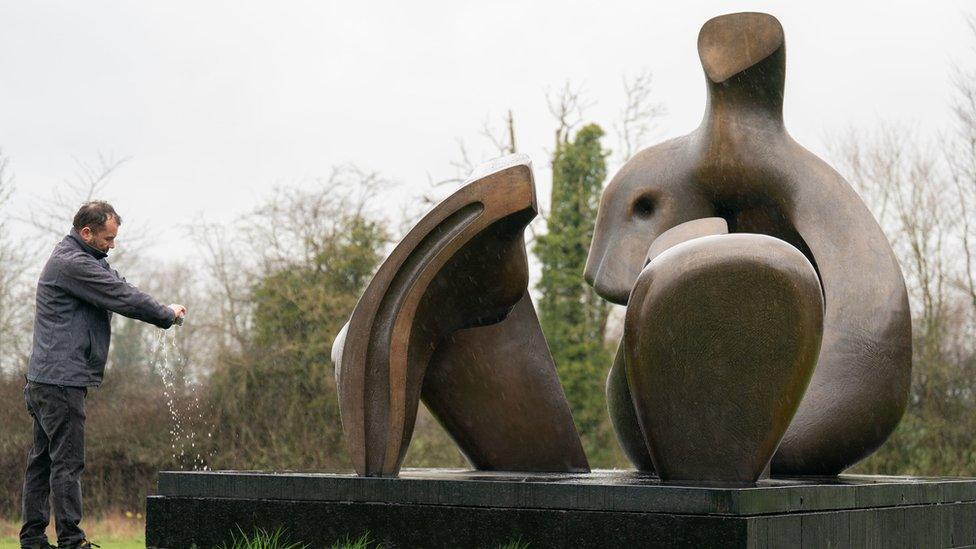
Three Piece Reclining Figure: Draped is cleaned in readiness for the new season on 5 April
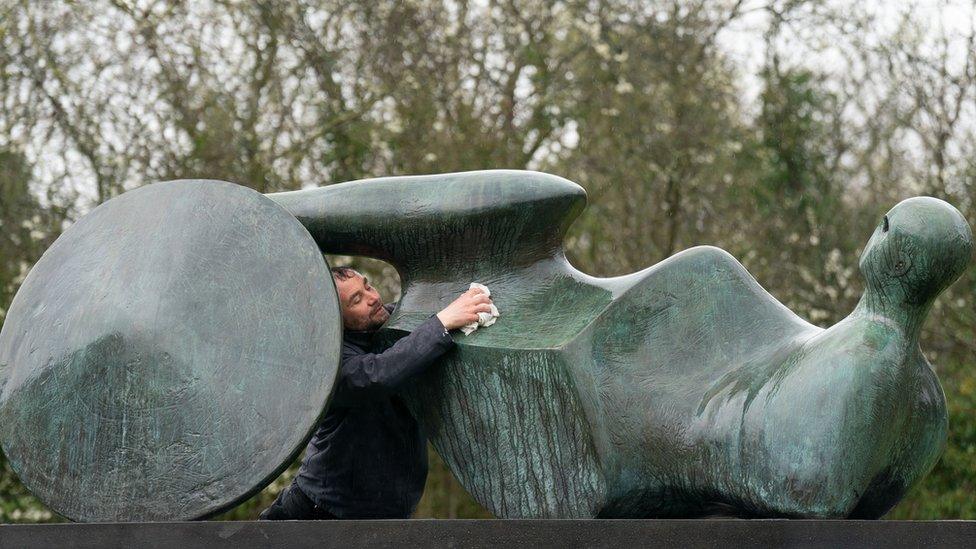
The bronze sculpture Goslar Warrior will feature among more than 20 pieces in the exhibition opening next week
The exhibition will bring together a selection of bronzes inspired by natural and human forms in the landscape surrounding the studios where Moore developed ideas.
Ms Higham, senior curator of collections and research, said it seemed "appropriate to consider vitality" on the 125th anniversary of his birth.
"Vitality was a word often used by Moore to describe a quality he hoped to embody in his art," she said.
"He used the term to describe an animating force or power."
Visitors to the Henry Moore Foundation will also be able to access a new audio-visual app about the exhibition, offering insights into the artist studio practices, the development of his famous sculptures and his life in the village.
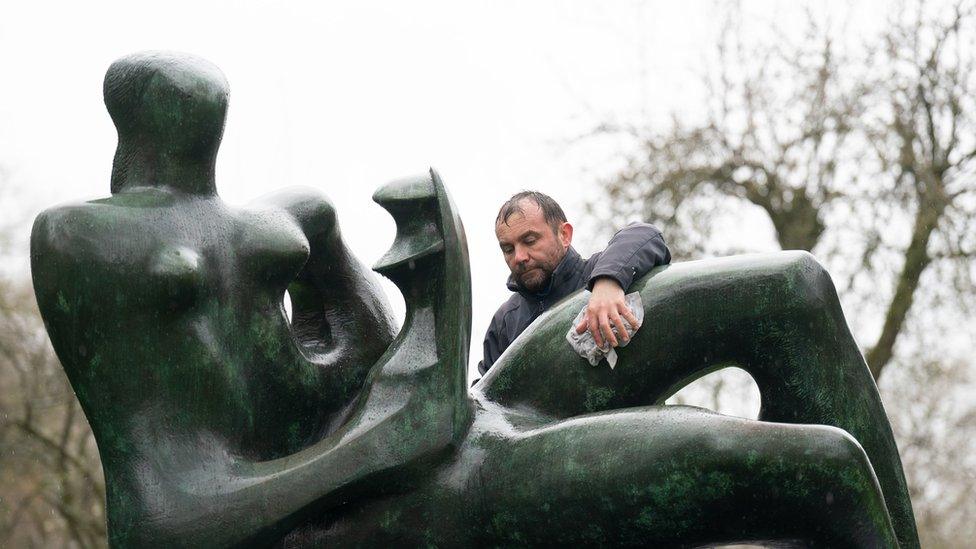
The Reclining Mother and Child bronze also features in the exhibition

Find BBC News: East of England on Facebook, external, Instagram, external and Twitter, external. If you have a story suggestion email eastofenglandnews@bbc.co.uk, external
Related topics
- Published16 December 2022
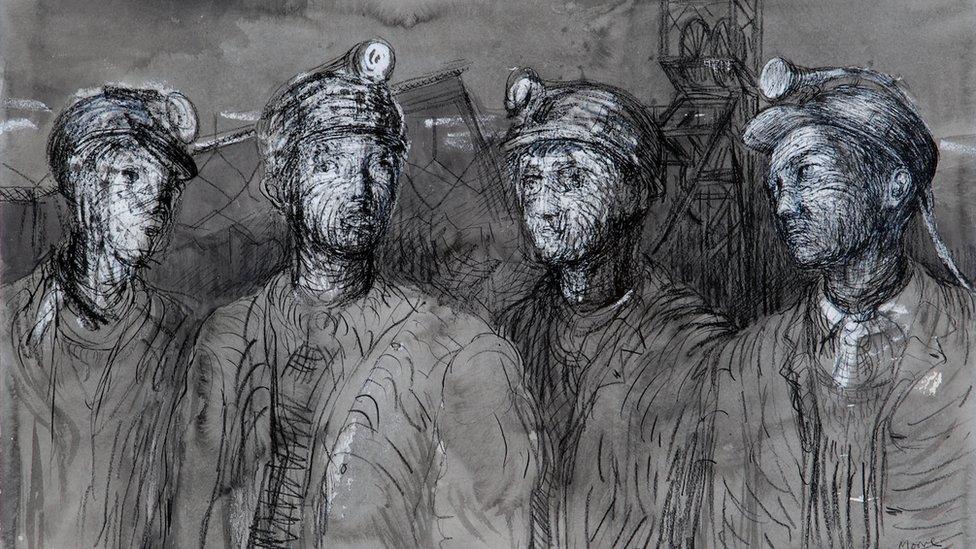
- Published16 March 2022
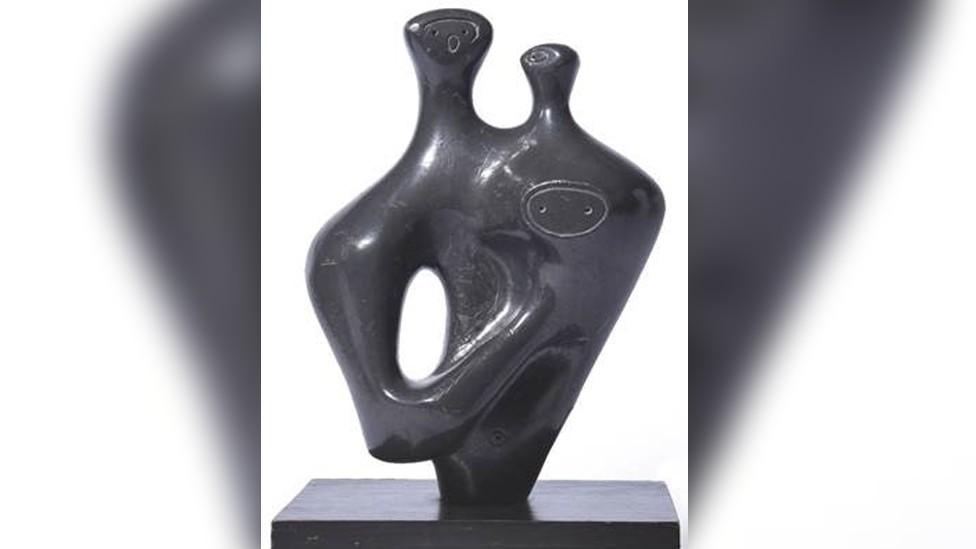
- Published28 July 2021
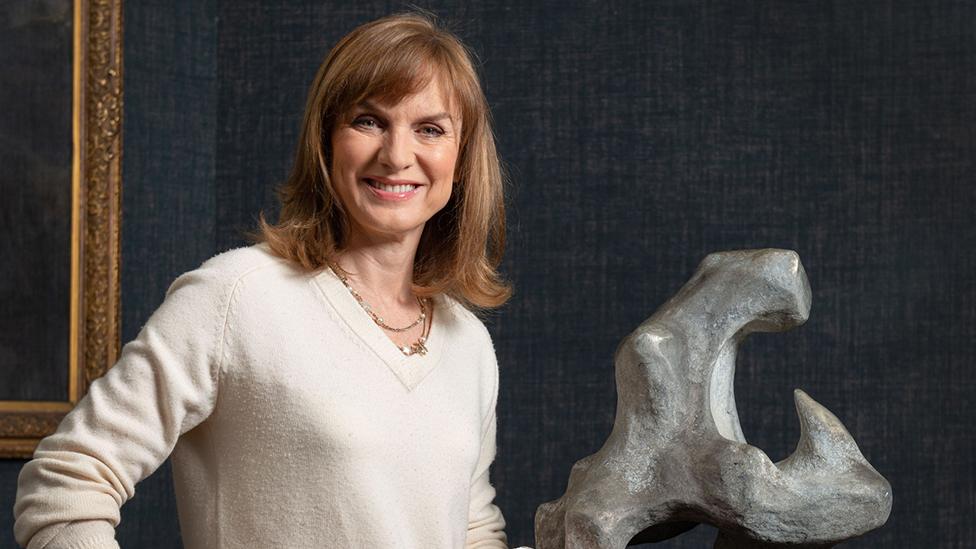
- Published12 May 2021
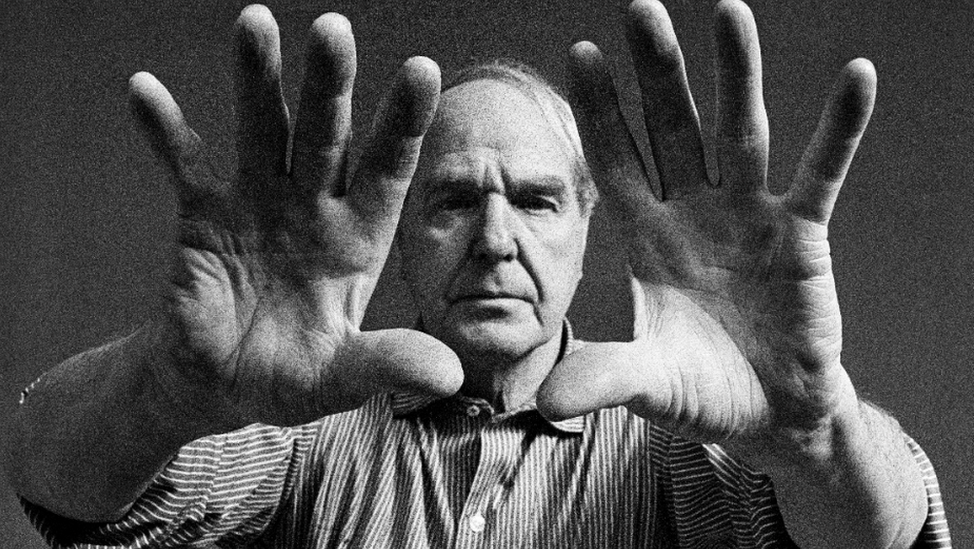
- Published28 May 2019
